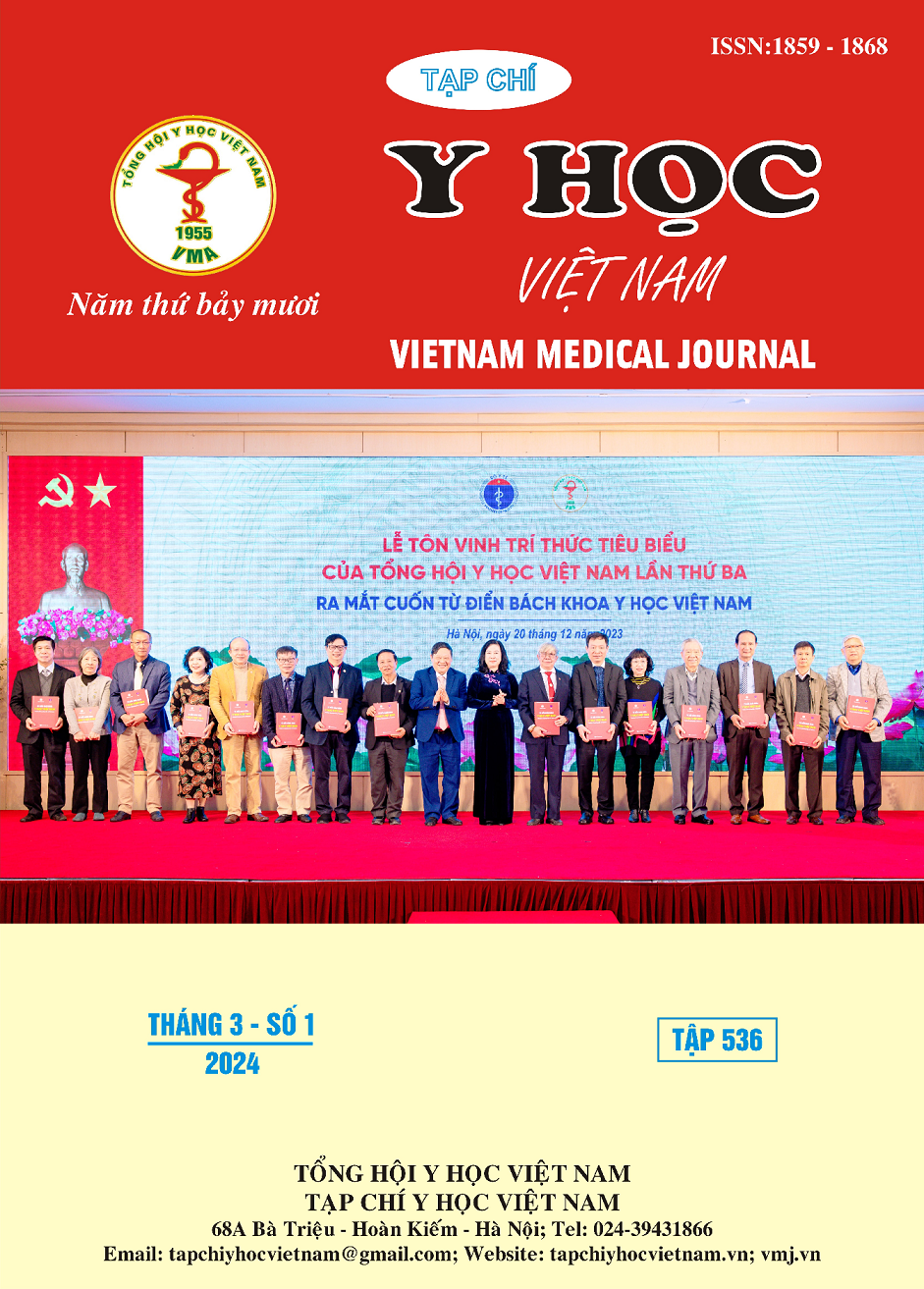RESULTS OF PERCUTANEOUS VERTERBROPLASTY BY EJECTING CEMENT IN PATIENTS WITH VERTERBRAL COMPRESSION DUE TO OSTEOPOROSIS AT E HOSPITAL
Main Article Content
Abstract
Objective: Evaluate pain relief results in patients with vertebral compression due to osteoporosis by ejecting cement. Subjects and methods: Retrospective study on 166 patients with 191 collapsed osteoporotic vertebral bodies underwent percutaneous vertebroplasties at Hospital E from January 2022 to December 2022. Clinical outcome were determined by comparison of preoperative and postoperative visual analog scale score. Review 6 months or more after surgery. Results: Female/male ratio :4.75/1. Mean age: 74,51 years (50-96). 100% cases had osteoporoses with T‐score <‐2.5. 59,64% cases of these had isolated osteoporoses and 40,36% cases had trauma fractures correlated. 83.73% of collapsed vertebrae are located in the thoracic-lumbar spine hinge area (D11-L2). The average VAS score before surgery was 8.8±1.2; 1 day after surgery VAS was 2.9±1.0. Complications encountered intraoperative were disc leakage (10.47%) and paravertebral leakage (3.66%). Conclusions: Percutaneous vertebroplasty for the treatment of osteoporotic vertebral collapse appears to be a safe, readily performed, minimally invasive procedure which provides significant reduction in pain; perform the procedures precisely and an intra‐operative electroluminescent screen is mandatory.
Article Details
References
2. Duvuru A, Hawkins SP, (2023). Percutaneous vertebroplasty: efficacy in the management of pain related to acute vertebral compression fractures. N Z Med J;136(1571):65-72.
3. Evans AJ, Jensen ME, Kip KE, DeNardo AJ, Lawler GJ, Negin GA, Remley KB, Boutin SM, Dunnagan SA, (2003). Vertebral Compression Fractures: Pain Reduction and Improvement in Functional Mobility after Percutaneous Polymethylmethacrylate Vertebroplasty—Retrospective Report of 245 Cases 1. Radiology, 226(2), p. 366‐372.
4. Hochmuth K, Proschek D, Schwarz W, Mack M, Kurth AA, Vogl TJ, (2006). Percutaneous vertebroplasty in the therapy of osteoporotic vertebral compression fractures: a critical review. European radiology, 16(5), p. 998‐1004
5. Dai C, Liang G, Zhang Y, Dong Y, Zhou X, (2022). Risk factors of vertebral re-fracture after PVP or PKP for osteoporotic vertebral compression fractures, especially in Eastern Asia: a systematic review and meta-analysis. J Orthop Surg Res, 17(1):161
6. Nakano M, Hirano N, Matsuura K, Watanabe RH, Kitagawa H, Ishihara RH, Kawaguchi Y, (2002). Percutaneous transpedicular vertebroplasty with calcium phosphate cement in the treatment of osteoporotic vertebral compression and burst fractures. Journal of Neurosurgery: Spine, 97(3), p. 287‐293.


